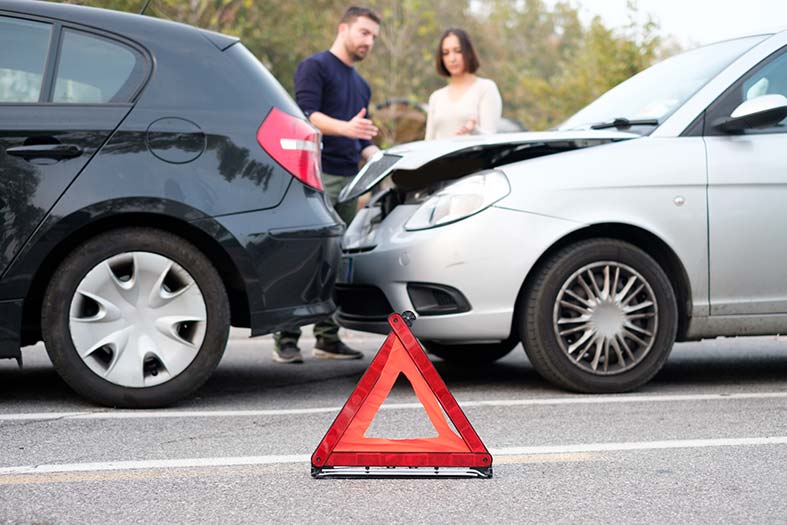If a car accident injured you, people likely asked you several times: "Who was at fault?" You may find yourself wondering why it matters. As it turns out, it matters a lot if you plan to seek compensation for the expenses and impacts of your injury through your state's personal injury claims process. Here is why.
Fault Equals Liability, and Liability Equals Legal Responsibility
The instant a car accident occurs, the focus is on who was at fault. The police will generally be required to investigate accidents resulting in significant property damage, injury, or death. They will focus on who was at fault for the accident to determine if anyone broke the law. If they find that someone did, they can cite or even arrest the at-fault party for a traffic violation.
At the scene, drivers must remain until law enforcement has investigated and exchanged insurance information with other drivers involved in the accident. This exchange of information is required for the victim to have the ability to file a personal injury claim against the other driver and to obtain compensation for the injury.
The at-fault driver's liability insurance policy pays most car accident claims.
If the at-fault driver maintained coverage by paying their premiums, and the policy covers the accident, then their insurance provider must pay for:

- All medical expenses associated with the treatment of the injury, including ambulance transportation, emergency medical services, diagnostic testing, hospitalization, surgeon and physician services, prescription medication, physical therapy and rehabilitation, assistive devices such as a wheelchair or a prosthetic limb, and additional treatment needed to address complications of the injury. For example, if an individual suffered a spinal cord injury that resulted in paralysis from the neck down, they may develop pneumonia due to the inability to remove secretions from their lungs. Because the pneumonia results from the injury, the at-fault party is responsible for compensating the victim for hospitalization, prescription medication, and other expenses related to the treatment of the condition.
- Wage loss and loss of earning capacity. Wage loss refers to the income and benefits the victim could not earn because they were too injured to work. Loss of earning capacity refers to the inability to earn an income due to permanent injuries caused by an accident. Spinal cord or traumatic brain injuries present a high likelihood of permanent impacts that can impair earning capacity simply because both body parts have extreme importance to the body’s ability to function. Neither is particularly adept at healing from injury and often results in disabilities.
- Property damage to the vehicle you were driving when the accident occurred. This can include the cost of repairing the damage or even replacing the vehicle if the cost of repairing it is more than its value.
- Physical pain and suffering can result from the injury itself, frequent or painful procedures used to treat it, or even chronic pain resulting from the injury.
- Emotional distress can occur due to the trauma of the accident, stress over the inability to work, or even anxiety experienced due to injuries that drastically alter the sufferer’s physical appearance.
- Loss of the enjoyment of life. Permanent injuries can prevent the sufferer from enjoying activities or hobbies that were important to them before the accident. For example, if an individual found great enjoyment in hiking before the accident but no longer can partake in the activity due to severe injuries, they can seek compensation for that.
What About Punitive Damages?
In most states, personal injury defendants may need to pay punitive damages if the defendant intentionally disregarded the claimant’s rights.
The amount the court awards for punitive damages is determined based on several factors, including the level of hazard the defendant’s reckless behavior imposed on others and the level of malicious intent the defendant exhibited when committing the actions. In Minnesota, claimants are not limited in the number of punitive damages they can seek.
In Wisconsin, however, claimants can only receive punitive damages that are the greater amount of either (A) no more than twice the amount of the compensatory damages they recovered, or (B) $200,000.
How Your Attorney Proves Fault
Car accidents are occasionally the result of someone intentionally trying to harm another person. More often, however, they result from carelessness or recklessness by someone who did not necessarily intend to cause harm.
This is negligence, and the three elements for proving it in a car accident claim include:
- Duty. For someone to be liable for your car accident, they must owe a duty of care due to their circumstances. The duty of care refers to the reasonable actions that one would take to avoid causing harm to others. The duty owed by drivers to others on the roadway involves driving safely and legally.
- Breach. You must prove the at-fault party breached the duty of care. In car accident claims, the breach generally refers to unsafe or illegal actions, such as distracted driving or speeding.
- Cause. The final element your attorney must show to prove is that the accident resulted from the above-listed breach in the duty of care.
The Types of Evidence Used to Show Liability in a Car Accident Claim
Evidence that your attorney can gather to prove liability includes:
- Photographs from the accident scene depict the damage to all vehicles involved. Often, the damage to the vehicles resulting from a car accident can provide many clues as to how the accident occurred. For example, if there was a two-car accident and one vehicle sustained damage to the front end while the other vehicle sustained damage to the rear, the accident was likely a rear-end collision. While there are certainly some exceptions, rear-end collisions are most often the fault of the driver of the vehicle that was following.
- Statements from eyewitnesses who saw how the accident occurred
- Testimony from accident reconstruction professionals who can study evidence such as skid marks to help determine whether the driver braked before the collision occurred.
- Information from the vehicle’s event data recorder (EDR) can show excessive speeds, hard braking, and other information about how the driver was operating the vehicle.
- Video surveillance cameras used by traffic agencies for monitoring roadways or by businesses to monitor the proximity around their storefront that captured the accident as it occurred.
Common Sources of Liability in Various Accident Types
As mentioned, rear-end collisions are most often the fault of the driver who tailgated another vehicle or—due to breaches in duty such as distraction or fatigue—failed to notice that the vehicle in front of them slowed or stopped.
The most likely sources of fault for these accidents follow:
- Broadside accidents, which involve the front of one vehicle colliding with the side of the other, generally result from one driver failing to yield the right-of-way.
- Sideswipe accidents involve the side of one vehicle making contact with the side of another vehicle. These accidents often occur due to improper passing, such as failing to check one's blind spots before changing lanes or a driver failing to ensure that they completely overtook another vehicle before returning to their original travel lane.
- Head-on collisions occur when the fronts of two vehicles traveling in opposite directions collide. These accidents generally result from wrong-way driving, and liability is often with the driver traveling in an opposing travel lane. However, head-on collisions can also result from the force of a previous crash pushing one of the vehicles into the other lane of travel. This makes determining liability more complex, as you may need to consider fault for the initial crash.
What if More Than One Source of Liability Can Compensate Me?
One of the essential tasks of a car accident injury attorney is to determine all sources of liability in their client’s accident and the associated liability insurance policy of each liable party. Most states allow for compensation to be sought from multiple parties and awarded according to the percentage of fault each responsible party was determined to have had.
In many states, including Minnesota and Wisconsin, if the injured claimant was partly at-fault for the accident, they are still permitted to file a claim as long as their negligence was not more than 50 percent to blame for the accident.
The Insurance Company Will Often Dispute Liability

Insurance companies—like most companies in the U.S.—are in the business to make money. They do this by collecting premiums for policies provided to their insured and by limiting the number of payouts on those policies to turn a profit.
To satisfy this endeavor, insurance companies hire claims adjusters to evaluate the claims and determine how much compensation (if any) the company must pay to the claimant to compensate them for the insured’s liability. In other words: the claims adjuster who evaluates your claim works for the insurance company and their interests, not for you and yours.
One of the most common tactics that claims adjusters use to reduce or eliminate the value of a claim made against them is to dispute liability.
Some of the ways they do this are by:
- Phrasing questions during their interview of the claimant in such a way that makes it appear that the claimant is admitting fault or changing their story
- Requesting the full release of the claimant’s medical record to search their medical history for pre-existing conditions to blame for the pain the claimant is experiencing. Insurance companies are not required to compensate for the expenses and impacts of injuries that did not occur due to the accident, only the extent that the accident worsened those conditions.
- Finding social media posts made by the claimant that either give a differing reason for the accident and how it occurred than what appeared in the police report or show the claimant participating in an activity that the adjuster doesn't believe they could do if they were as seriously injured as they claimed.
Contact an experienced car accident injury attorney who can manage communication with the claims adjuster to keep the topic focused on negotiating a settlement that fairly compensates the claimant for the expenses and impacts of their injury instead of the adjuster's attempts to take advantage of the claimant's lack of understanding or knowledge of the claims process.